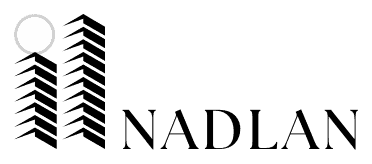Symbols have been an integral part of human culture for millennia, acting as a universal language that transcends borders and eras. From early cave paintings to modern logos, symbols communicate complex ideas, beliefs, and values. They shape our perceptions of safety, protection, and fortune, often drawing on ancient origins to imbue modern concepts with deeper significance. This article explores the fascinating journey of symbols from their mythological roots to their contemporary applications, revealing how ancient wisdom continues to influence our notions of security and prosperity.
Contents
- The Origins of Symbols: Connecting Past and Present
- Symbolism of Divine Guidance and Protection in Ancient Cultures
- Lessons from Mythology: Humility and Respect for Power
- Modern Symbols Inspired by Ancient Concepts
- Non-Obvious Connections: Symbols and Human Psychology
- The Role of Symbols in Shaping Modern Fortunes and Safety Strategies
- Deep Dive: The Ethical Dimensions of Symbolic Power
- Conclusion: Bridging Ancient Wisdom and Modern Innovation
The Origins of Symbols: Connecting Past and Present
Historically, symbols played a vital role in ancient societies, often serving as visual representations of divine forces, natural phenomena, or societal values. Early humans used symbols in cave paintings to communicate stories, spiritual beliefs, and survival strategies. Over time, these symbols became embedded in myths and religious practices, such as the Egyptian ankh representing eternal life or the Greek labyrinth symbolizing journeys and protection.
Ancient myths and beliefs wove symbols into daily life, making them potent tools for conveying safety, power, and fortune. As civilizations advanced, these symbols transitioned from mythological contexts to more abstract representations in heraldry, art, and later, commercial branding. The continuity of symbolism demonstrates a human inclination to seek reassurance and prosperity through visual metaphors rooted in our shared history.
Symbolism of Divine Guidance and Protection in Ancient Cultures
The Torch: Eternal Flame and Divine Guidance
The torch has long symbolized enlightenment, hope, and divine guidance. In Greek mythology, Prometheus’s gift of fire represented knowledge and civilization, while the Olympic torch embodies the eternal pursuit of excellence. Today, the torch’s image is widely used in safety contexts, such as emergency flashlights, fire safety signs, and security branding, emphasizing illumination and protection in critical moments.
Lightning Bolts: Divine Weapons of Zeus
In mythology, Zeus’s lightning bolts symbolized divine power, authority, and control over natural forces. These symbols of raw energy and protection have influenced modern iconography, appearing in logos, military insignia, and safety devices. The lightning bolt’s dynamic shape conveys swift action and formidable strength, reinforcing its association with safeguarding and authoritative power.
Lessons from Mythology: Humility and Respect for Power
Mythological stories often serve as cautionary tales about hubris—overconfidence before divine or natural forces. For instance, Icarus’s hubris led to his fall, reminding humans to respect the limits of power. These lessons are foundational in modern safety protocols and risk management, emphasizing humility, respect for natural forces, and the importance of cautious planning.
"Respect for natural and divine forces is essential for sustainable safety and prosperity."
Modern Symbols Inspired by Ancient Concepts
Contemporary safety designs often incorporate symbols derived from ancient motifs to evoke trust, strength, and endurance. For example, the use of shield shapes, ancient runes, or mythological references in branding conveys stability and protection. One illustrative case is the New Pragmatic release worth checking, Gates of Olympus 1000, which exemplifies how mythological heritage can be integrated into modern symbols of fortune and resilience.
| Symbol | Ancient Meaning | Modern Application |
|---|---|---|
| Torch | Eternal flame, illumination | Safety lighting, security branding |
| Lightning Bolt | Divine power, swift justice | Protection symbols, energy logos |
Non-Obvious Connections: Symbols and Human Psychology
Ancient symbols influence human decision-making at a subconscious level, shaping perceptions of safety and trust. Symbols like shields, eyes, or divine motifs evoke feelings of protection and authority, which are leveraged in modern safety measures to foster confidence. For example, security logos often incorporate familiar mythological or historical symbols to resonate culturally and psychologically, making users more receptive to safety messages.
Designing symbols with cultural resonance enhances their effectiveness. When symbols align with collective subconscious beliefs, they become powerful tools for building trust and encouraging cautious behavior—crucial elements in safety-critical industries.
The Role of Symbols in Shaping Modern Fortunes and Safety Strategies
In contemporary security and branding, symbolic elements are integral. Financial institutions incorporate symbols of stability, such as pillars or shields, to evoke trust. Technological companies use icons inspired by ancient motifs to suggest resilience and innovation. Physical safety measures, like signage and alarms, often feature familiar symbols rooted in history to ensure quick recognition and response.
Looking ahead, the digital age introduces evolving symbols—virtual shields, encrypted keys, and holographic icons—that build upon ancient principles while adapting to new communication channels. This ongoing evolution demonstrates the enduring power of symbolism in shaping perceptions of safety and prosperity.
Deep Dive: The Ethical Dimensions of Symbolic Power
The use of symbols carries significant responsibility. Manipulating symbols for commercial or political gain can mislead or manipulate public perception, raising ethical concerns. Respect for cultural origins and avoiding misappropriation are essential to prevent cultural insensitivity or dilution of meaning.
Balancing tradition with innovation requires careful consideration. When integrating ancient symbols into modern contexts, creators must ensure they honor their origins and do not exploit their power irresponsibly. This ethical approach fosters trust and preserves the integrity of symbolic communication.
Conclusion: Bridging Ancient Wisdom and Modern Innovation
Ancient symbols continue to influence how we perceive safety and fortune today. Their origins in myth and divine stories provide a timeless framework that informs modern branding, security, and risk management strategies. Recognizing the symbolic heritage enriches our understanding and allows for thoughtful integration in future innovations.
As we progress into an increasingly digital landscape, the fundamental principles of symbolism remain relevant. By respecting their origins and ethical implications, designers and safety professionals can craft symbols that resonate deeply, fostering trust and prosperity across cultures and generations.
